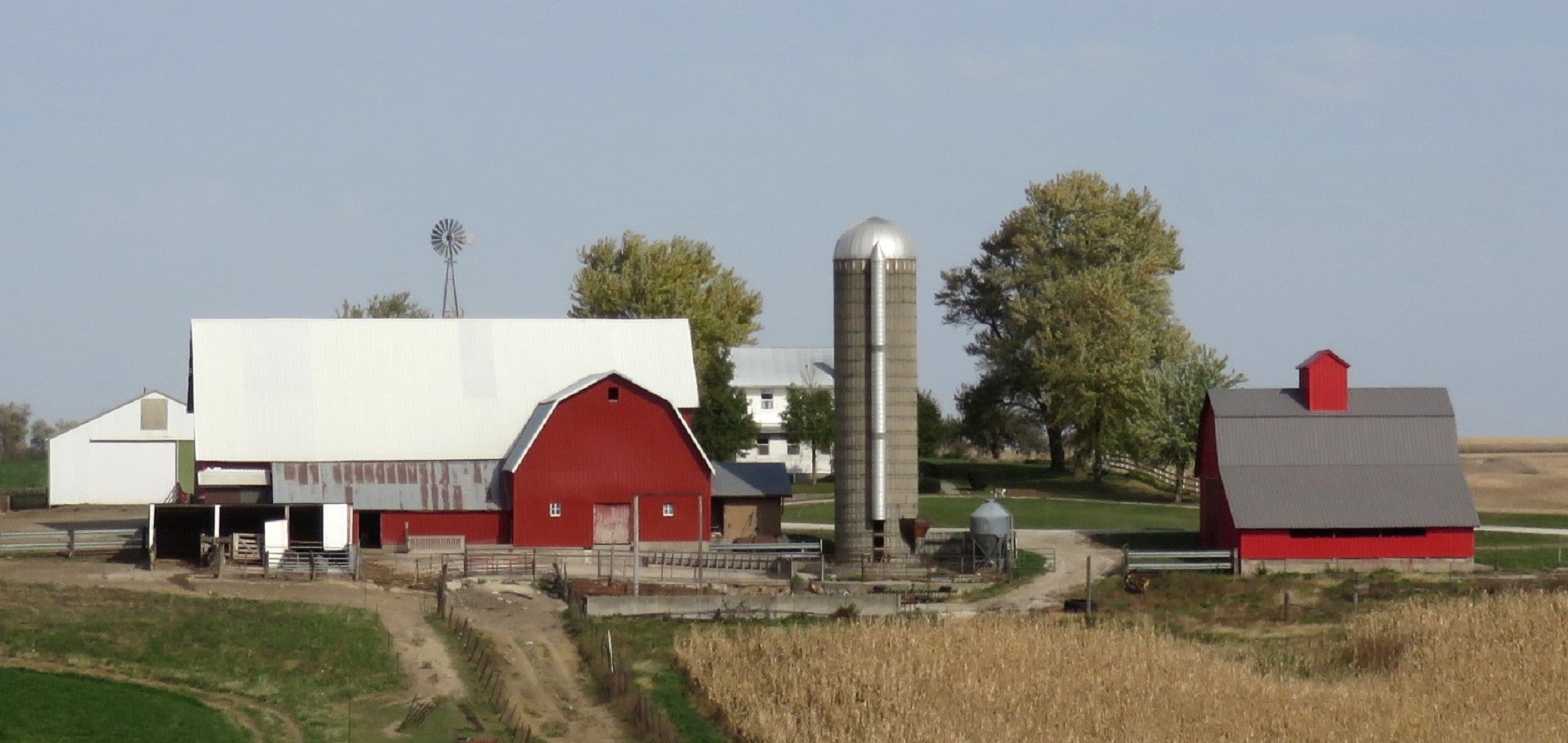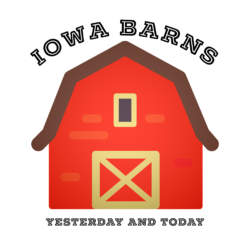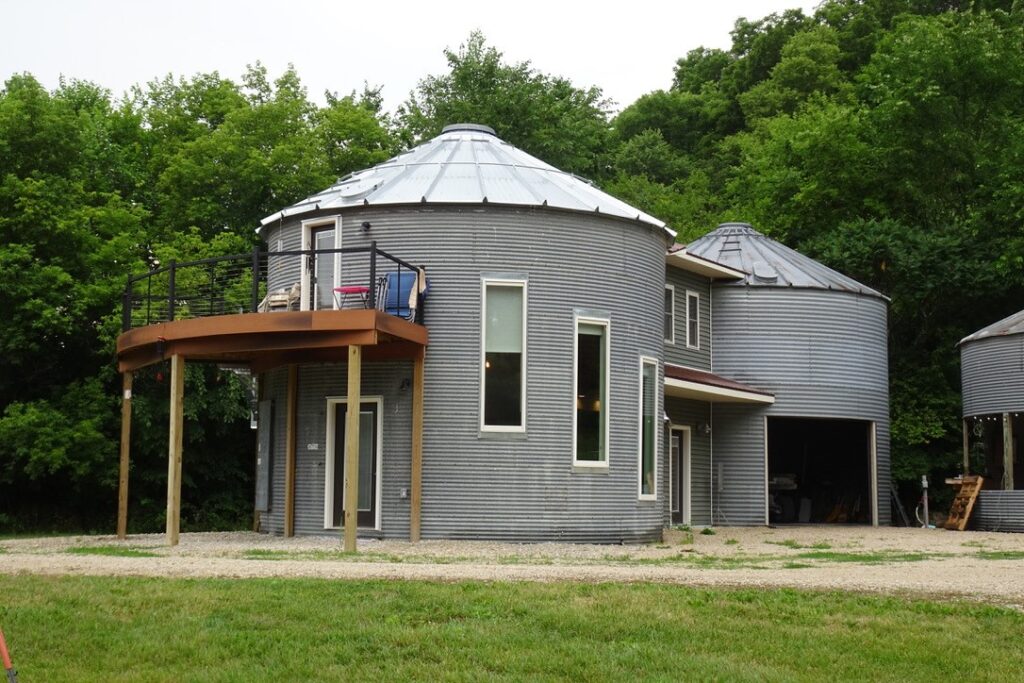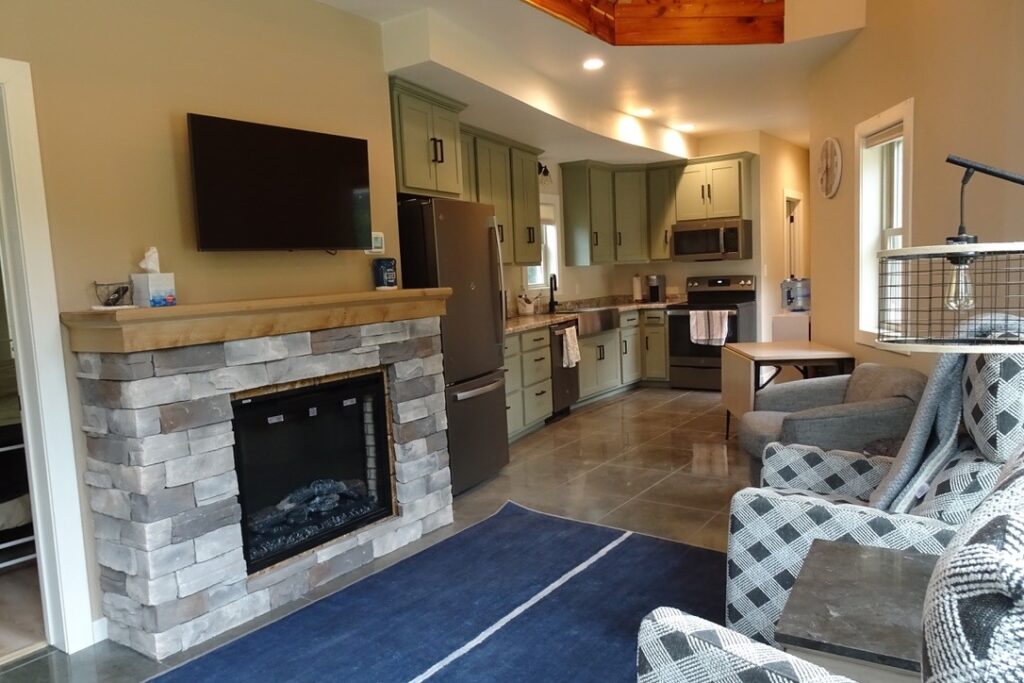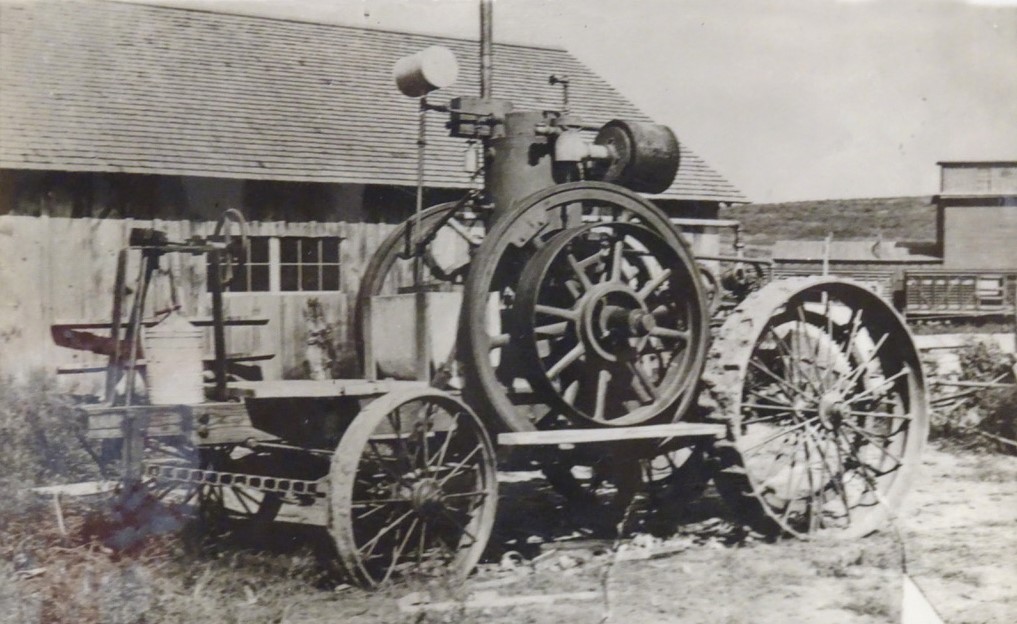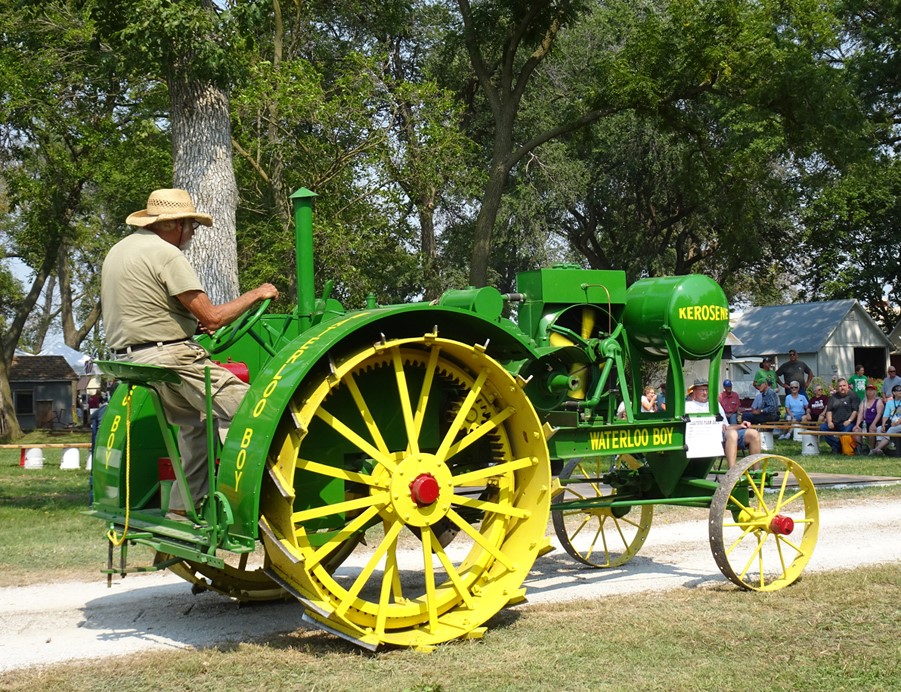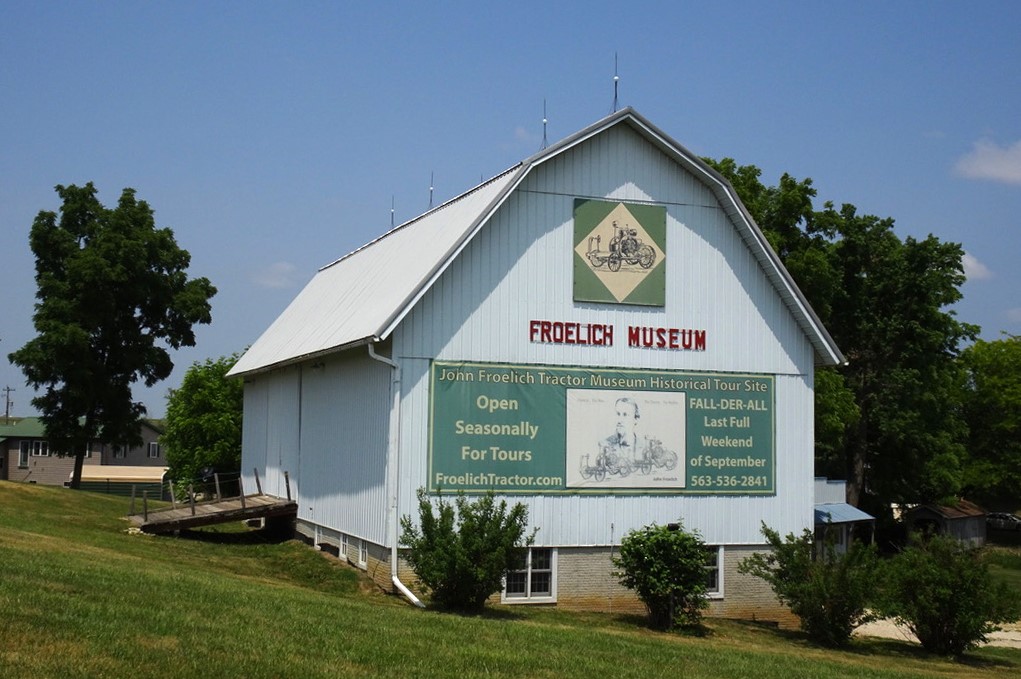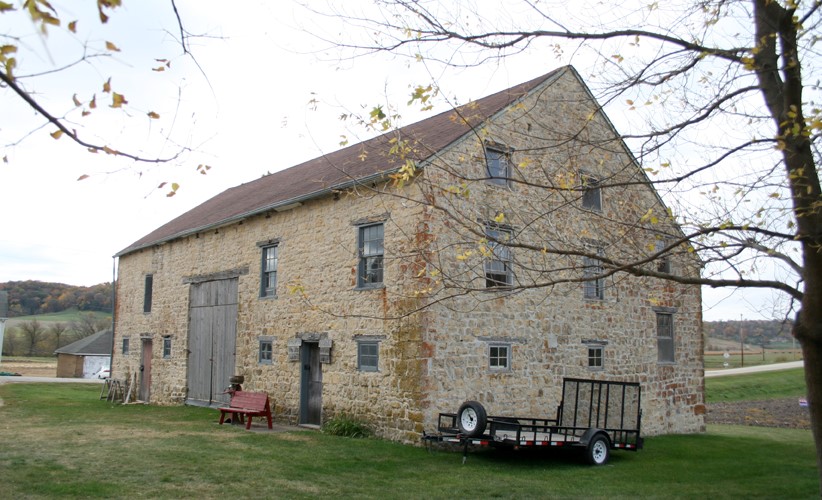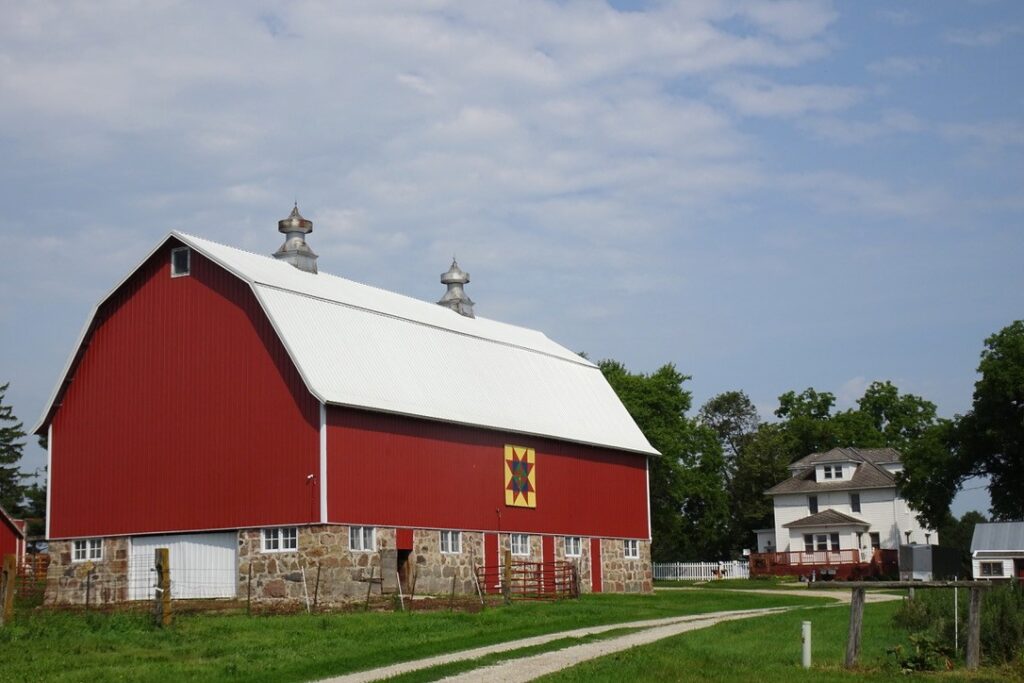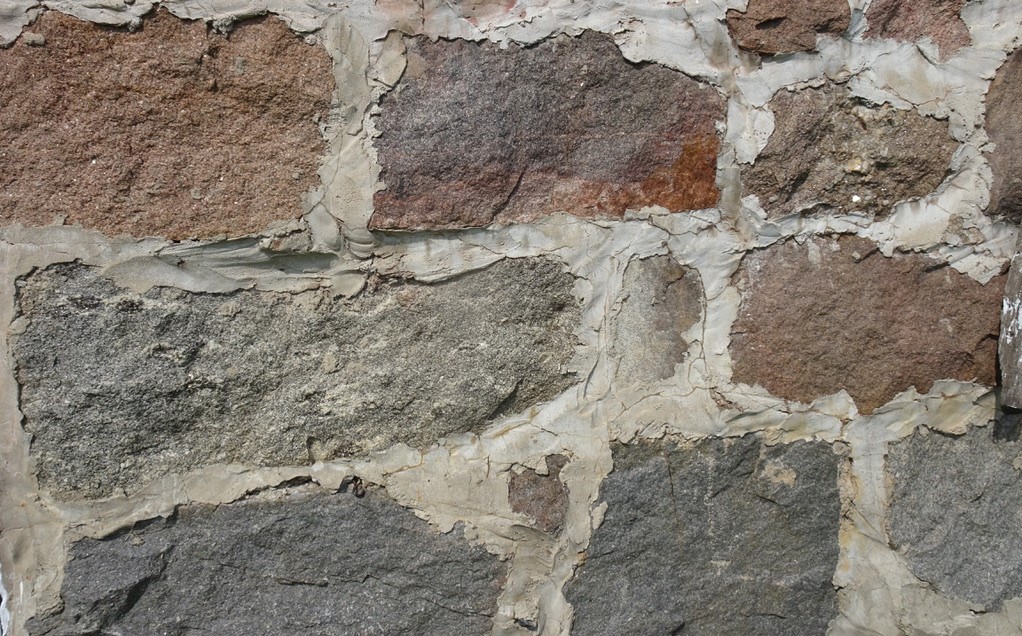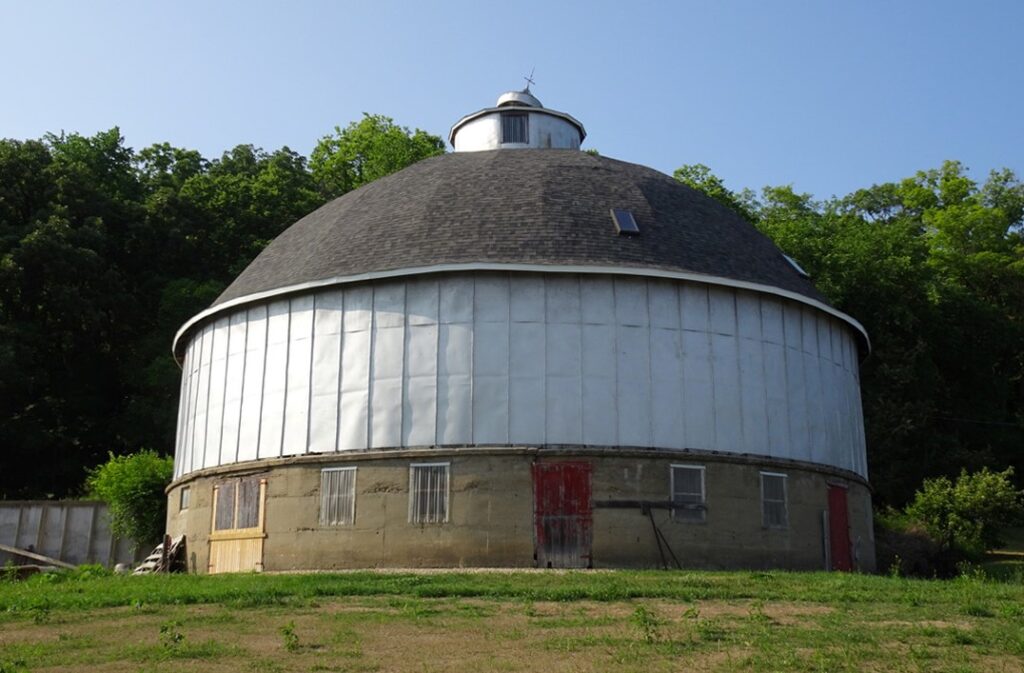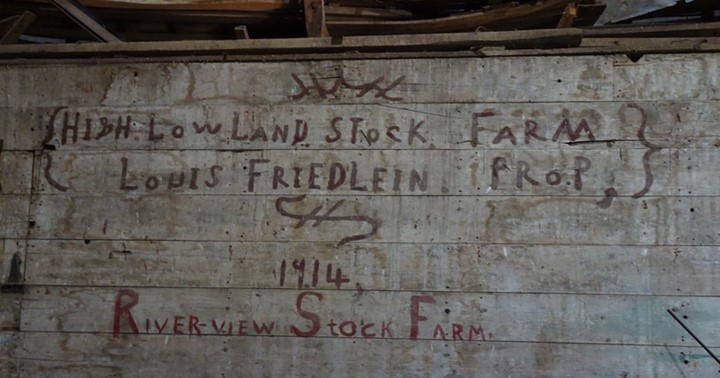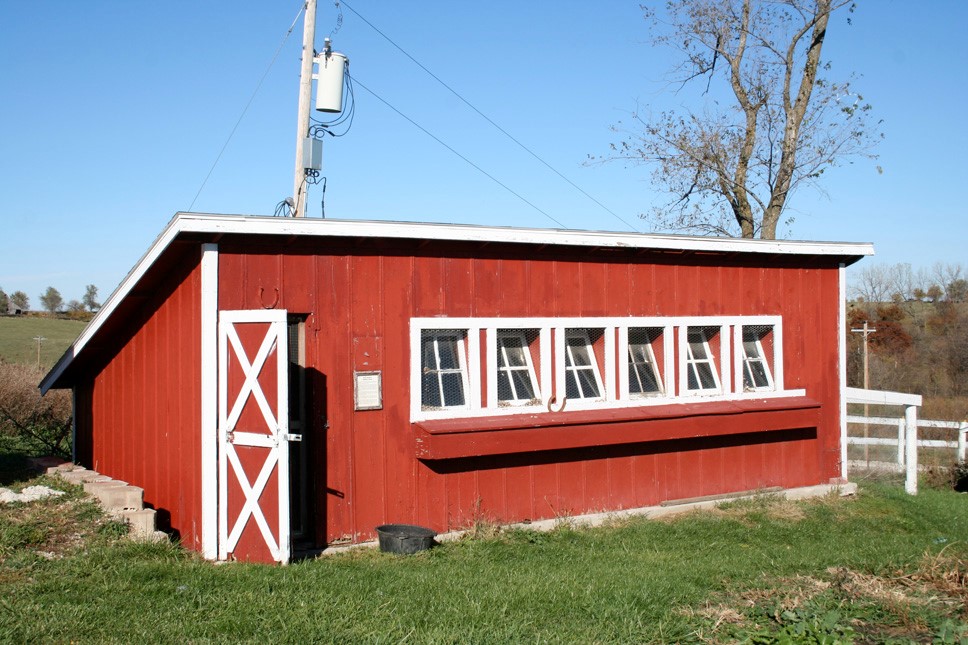Blog #2, sent in July 2020, featured this barn. However, many persons have been added to the list since I began writing this blog over three years ago. The subject matter is the same but the excitement regarding this barn hasn’t diminished and new discoveries continue to be made.
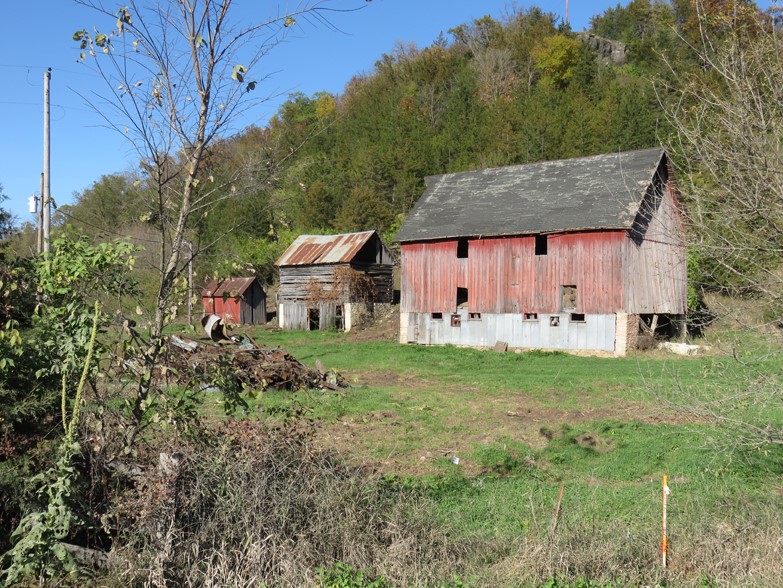
This photo was taken in 2014 in Allamakee County in the Paint Creek Valley area. It didn’t look like there was much hope for saving the barn as it had sat empty for many years. However, a new owner decided it was worth saving.
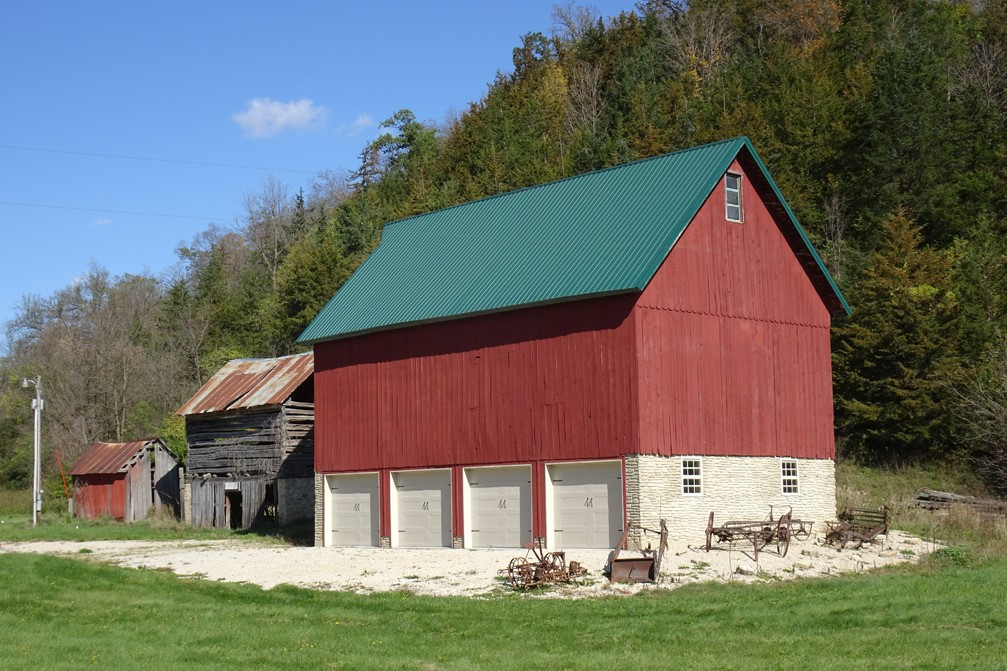
Kudos to the owners for restoring this 1906 barn in recent years. It is a bank barn with the entrance to the loft located on the back side. Major renovations included a new concrete foundation and new concrete floor inside, addition of four double doors, replacement of a few boards and windows, a new steel roof, and paint. It is now used for storage of equipment. The antiques on display were found hidden in weeds around the barn. (2021 photo)

Thirty-seven people were standing on the framework of the barn in the photo below. This day was truly a day to remember, as the itinerant photographer documented this momentous event in the family’s life. More of the story and this photo can be found on page 13 in Iowa Barns yesterday and today.
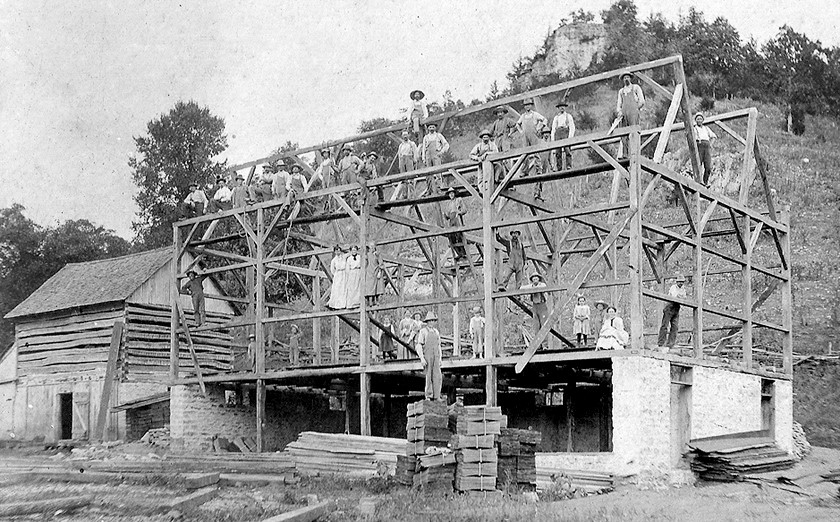
Wanted! The owners would like to give the log building next to the barn to anyone willing to dismantle it, take it, and restore it for his/her own use. The smallest building is gone. If a reader is interested, please contact me via email to discuss this possibility.
